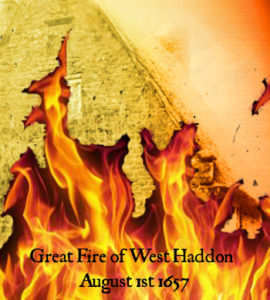 When John Bland of Long Buckby came courting Lettice Miller of West Haddon her parents, Richard and Elizabeth Miller, approved the match and settled a house and some land on the happy couple when they tied the knot in the summer of 1656.
When John Bland of Long Buckby came courting Lettice Miller of West Haddon her parents, Richard and Elizabeth Miller, approved the match and settled a house and some land on the happy couple when they tied the knot in the summer of 1656.
The first baby arrived promptly the following January. She was a little girl and they called her Elizabeth, after her grandmother. Very soon after, Lettice found herself pregnant again, probably just before the fire. The little family was not among those who lost everything during that disaster.
But there was sorrow in store. The following February baby Elizabeth died. She was buried on 4 February and only days later Lettice gave birth to another daughter. The new baby was baptised on 15 February and she was also given the name Elizabeth. (It was quite common at that time to name a child after a dead sibling – in this case it honoured her dead sister and her living grandmother.)
A number of other children followed, including Nicholas, who decided as he grew up that country life wasn’t for him and took himself off to London to seek his fortune. He became a City of London waterman, operating a boat on the Thames, taking passengers up and down the river – often a quicker way to their destinations than negotiating the narrow and crowded streets of the capital.
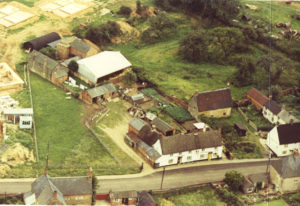 Nicholas spent the rest of his life in London and in due course his son William followed in his footsteps. The Bland house in West Haddon had been rented out for many years, but in 1729 William put it up for sale and the house, with the close behind it, was sold for a little over £60. Thomas Patch bought it and it remained in the Patch family for over a century, eventually becoming what we know now as The Old Brickyard.
Nicholas spent the rest of his life in London and in due course his son William followed in his footsteps. The Bland house in West Haddon had been rented out for many years, but in 1729 William put it up for sale and the house, with the close behind it, was sold for a little over £60. Thomas Patch bought it and it remained in the Patch family for over a century, eventually becoming what we know now as The Old Brickyard.
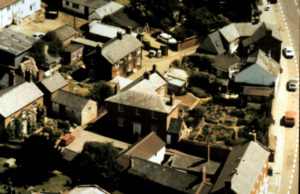 Over the years the cottage was altered and added to and the quarter acre was gradually filled up with workshops and outbuildings. We know it now as the point of the Crown Lane triangle. Possibly the little cottage at the back, with the steeply pitched roof, may represent the original cottage that William built, or it may have disappeared under a later rebuilding of Manchester House.
Over the years the cottage was altered and added to and the quarter acre was gradually filled up with workshops and outbuildings. We know it now as the point of the Crown Lane triangle. Possibly the little cottage at the back, with the steeply pitched roof, may represent the original cottage that William built, or it may have disappeared under a later rebuilding of Manchester House.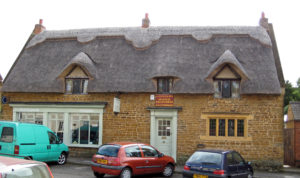 wife Alice. The house still stands in the village. (Not bad for £22!)
wife Alice. The house still stands in the village. (Not bad for £22!)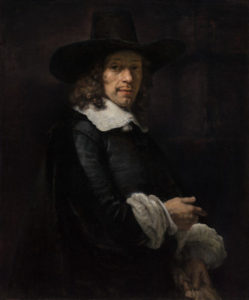 He had bought his largest landholding from another gentleman, Samuel Hogson and his wife. Hogson is not a familiar name in West Haddon. Was there perhaps a marriage connection? We don’t know Mary Hogson’s maiden name, but perhaps she brought the land in West Haddon to her husband as a marriage settlement. Edward left that land, and the two houses or cottages with it, to his cousin Elizabeth, who was married to a local farmer called William Feacon, one of Edward’s tenants.
He had bought his largest landholding from another gentleman, Samuel Hogson and his wife. Hogson is not a familiar name in West Haddon. Was there perhaps a marriage connection? We don’t know Mary Hogson’s maiden name, but perhaps she brought the land in West Haddon to her husband as a marriage settlement. Edward left that land, and the two houses or cottages with it, to his cousin Elizabeth, who was married to a local farmer called William Feacon, one of Edward’s tenants.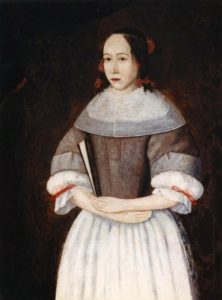 e wages of her servant, Rowland Green. And he left money to her daughter, Mary. She was a fortunate young woman, having also received a legacy from her maternal grandfather, Thomas Kirtland who, in 1683 had left £20 ‘to my pretty grandchild, Mary Burnham.’
e wages of her servant, Rowland Green. And he left money to her daughter, Mary. She was a fortunate young woman, having also received a legacy from her maternal grandfather, Thomas Kirtland who, in 1683 had left £20 ‘to my pretty grandchild, Mary Burnham.’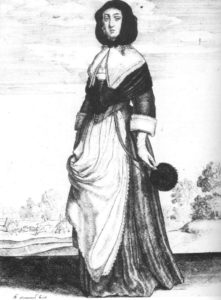 So Joan was an independent woman with her own house – not living as a pitied spinster in the home of a relation.
So Joan was an independent woman with her own house – not living as a pitied spinster in the home of a relation.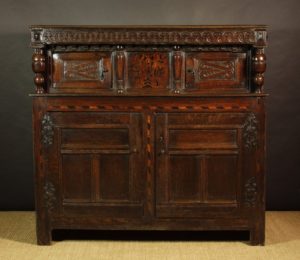 Two cushions of a colour, one of them stands on the court cupboard in the parlour, the cupboard cloth and the wicker chair in the hall…
Two cushions of a colour, one of them stands on the court cupboard in the parlour, the cupboard cloth and the wicker chair in the hall…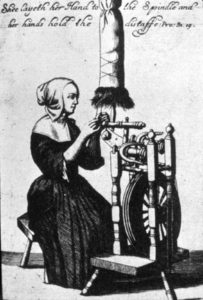
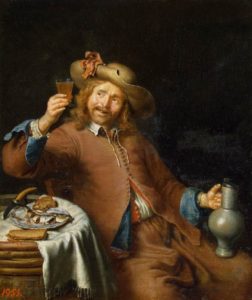 Richard perhaps came into his inheritance too young. There is also the possibility that he rather envied the big city life that his brothers were enjoying. All his roistering may have been an outlet for his frustration with village life, and with the responsibilities involved in looking after his mother and sisters. (The girls had each been left a £10 dowry, so he may have felt the need to fend off unsuitable lovers.) His youngest brother John probably helped on the farm and perhaps inherited it when Richard died, still a batchelor, in 1667.
Richard perhaps came into his inheritance too young. There is also the possibility that he rather envied the big city life that his brothers were enjoying. All his roistering may have been an outlet for his frustration with village life, and with the responsibilities involved in looking after his mother and sisters. (The girls had each been left a £10 dowry, so he may have felt the need to fend off unsuitable lovers.) His youngest brother John probably helped on the farm and perhaps inherited it when Richard died, still a batchelor, in 1667.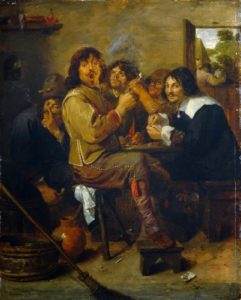
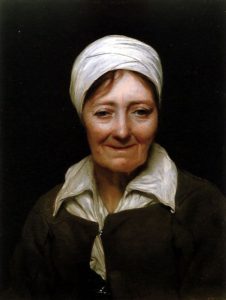 The earliest parish register that survives began in 1653. Any number of Mr Clarkes may have been buried in the years before that, but we can’t know who they were, what they did for a living, or whether they had a wife called Mary.
The earliest parish register that survives began in 1653. Any number of Mr Clarkes may have been buried in the years before that, but we can’t know who they were, what they did for a living, or whether they had a wife called Mary.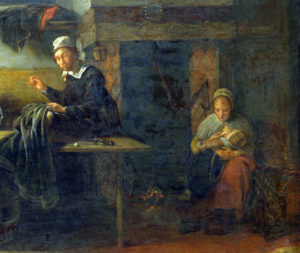 Two years after the fire we find Mark selling part of his property to an elderly widow, Isabella Ringrose – in effect, the barn, converted into a dwelling, along with a small yard and right of way through the jitty to the well to fetch water and also over John Warde’s yard. For the ‘barn conversion’ she paid him £9, with a standing charge of two old pennies per year towards the repair of the well bucket. In the Hearth Tax returns of 1662 and again in 1674 both Mark and Isabella are listed as having one hearth each, but certified as too poor to pay the tax. Had Mark converted the barn as a home for his son before the fire and did Thomas then move away, leaving his father to sell it, or what was left of it?
Two years after the fire we find Mark selling part of his property to an elderly widow, Isabella Ringrose – in effect, the barn, converted into a dwelling, along with a small yard and right of way through the jitty to the well to fetch water and also over John Warde’s yard. For the ‘barn conversion’ she paid him £9, with a standing charge of two old pennies per year towards the repair of the well bucket. In the Hearth Tax returns of 1662 and again in 1674 both Mark and Isabella are listed as having one hearth each, but certified as too poor to pay the tax. Had Mark converted the barn as a home for his son before the fire and did Thomas then move away, leaving his father to sell it, or what was left of it?